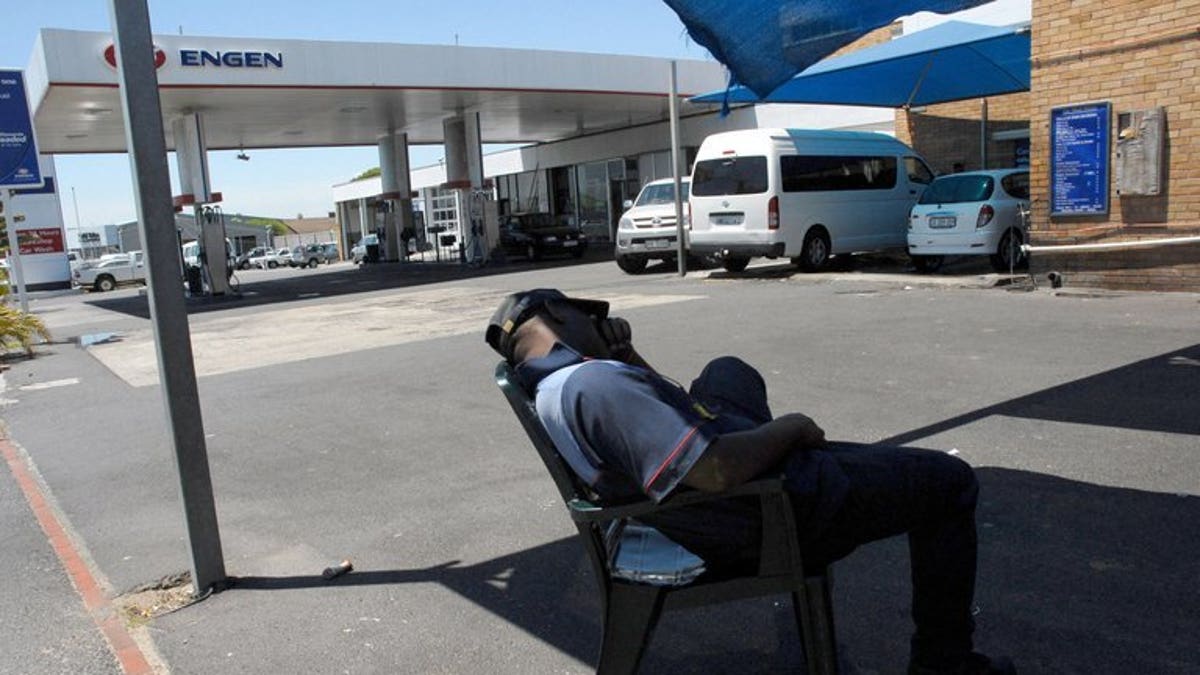
A petrol attendant takes a break in Cape Town. South African consumer prices surged by 6.3 percent over the 12 months to July, official figures showed on Wednesday, driven by high petrol prices. (AFP/File)
PRETORIA, Gauteng (AFP) – South African consumer prices surged by 6.3 percent over the 12 months to July, official figures showed on Wednesday, driven by high petrol prices.
Statistics South Africa said prices ticked up from the corresponding annual rate of 5.5 percent in June, fuelled by an increase of 84 cents per litre in the price of petrol at the beginning of July.
Increases in electricity and water tariffs enacted by municipalities last month also took their toll.
"It was quite a bit higher than we thought it would be, mainly because of the electricity component," said Peter Attard Montalto, emerging market economist at Nomura.
A depreciating rand and rising wage and salary costs have hit consumers and the economy hard.
The 6.3-percent rate is the above the 6.0-percent upper range of South African Reserve Bank inflation target.
The consumer price index has been kept above the 4.5-percent mid-point of the central bank's target inflation rate since June 2011, leaving little room to lower interest rates in order to spur growth.
The governor of the South African Reserve Bank Gill Marcus said the leading BRICS emerging countries of Brazil, Russia, India, China and South Africa, had been hit hard by a deterioration in global growth.
He made his remarks in a speech on July 26 to shareholders in Pretoria, the administrative capital of South Africa.
The Reserve Bank lowered its growth forecast to 2.0 in 2013, and 3.3 for the next year. Marcus said there are risks to the forecast, citing electricity supply constraints.
"Although our forecast suggests that inflation will remain within the target range," said Marcus, "it is uncomfortably close to the top of the target range and the risks to this forecast are seen to be on the upside."
South Africa is one of the countries caught up in pressures on emerging economies in recent months.
The common factor recently is a perception that the US central bank is about to begin tightening its easy-money stimulus.
Some of this cheap money had gone into emerging markets, stimulating their growth, but now some of it is flowing out, depressing their currencies, pushing up interest rates on their sovereign debt markets, and highlighting specific weaknesses in the economies of each country.
